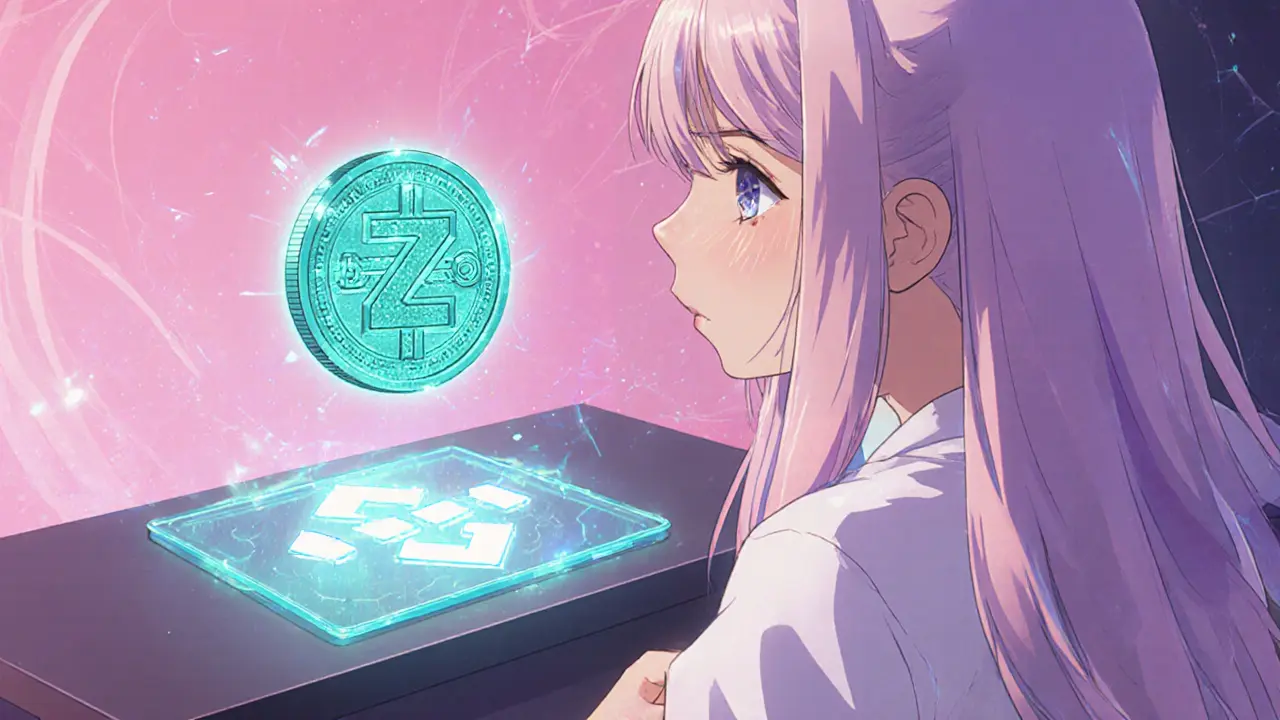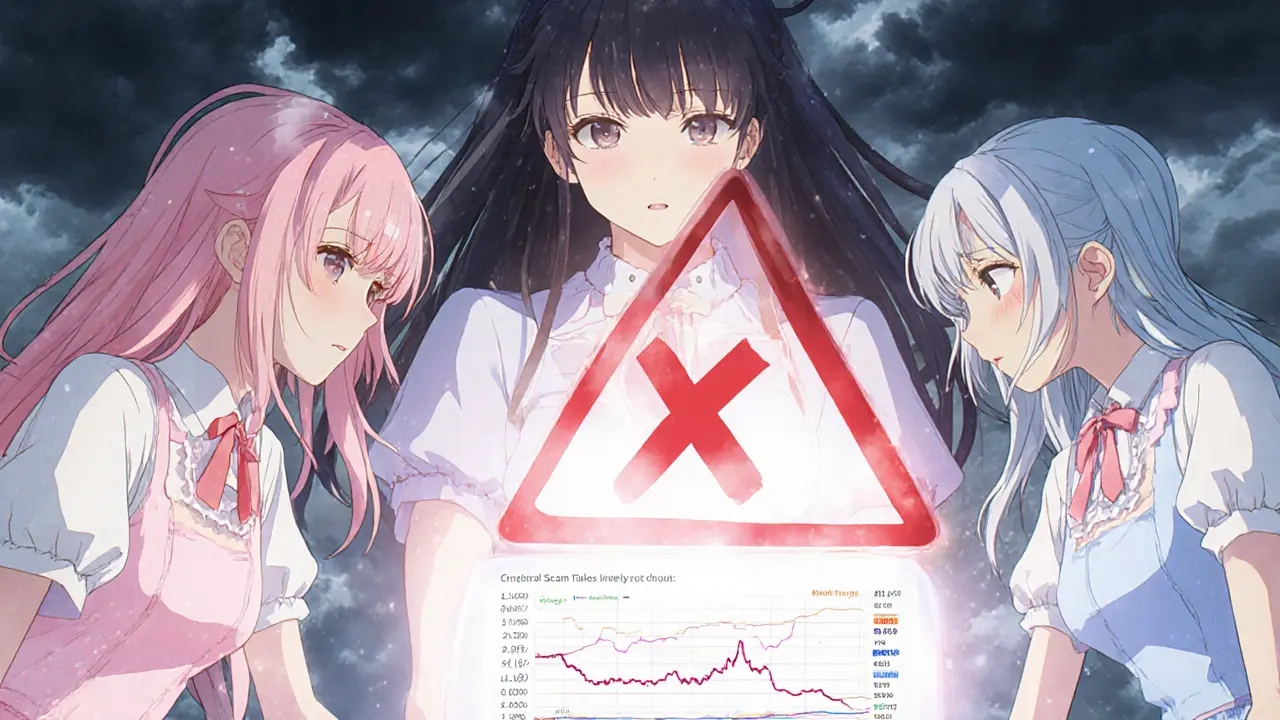CryptoZoo (new) (ZOO) Explained: What the Token Is, Its Versions, and Why It’s Considered a Scam

CryptoZoo Token Comparison Tool
This tool helps you understand the differences between various CryptoZoo (ZOO) token versions. All versions are considered speculative with minimal utility.
CryptoZoo (new) (ZOO)
BSC (BEP20)
Price: $0.0000007273
Volume: ~$0
Supply: ~1.9985B
Most common version on Binance Smart Chain
CryptoZoo (ZOO)
Ethereum (ERC-20)
Price: $0.06637
Volume: $2,588
Supply: Not disclosed
Higher priced but low liquidity
ZOO – Crypto World
Ethereum (ERC-20)
Price: $0.000256
Volume: Under $3,000
Supply: Not disclosed
Low trading activity
CryptoZoo (Solana)
Solana
Price: Negligible
Volume: Minimal
Supply: Not disclosed
No real use-case demonstrated
Key Findings
- Low Liquidity: All versions show minimal trading volume
- No Utility: None of the versions offer real functionality
- Scam Indicators: Lack of whitepaper, no official support, celebrity ties
- Price Volatility: High fluctuations across versions
- Fragmentation: Same name on multiple blockchains confuses investors
Why This Matters
CryptoZoo tokens are examples of speculative hype without substance. They represent typical red flags of crypto scams:
- Unrealistic promises of quick returns
- Lack of transparency or documentation
- High volatility and low trading volumes
- Connections to failed projects or celebrity endorsements
Experts consider them "zombie scams"—tokens that survive only through hype and speculation.
When people ask “What is CryptoZoo (new) (ZOO)”, the short answer is that it’s a low‑value speculative token that lives on the Binance Smart Chain and has been forked from a failed celebrity NFT game. It offers no real utility beyond trading on tiny volumes and hype from price‑prediction sites.
Quick Takeaways
- CryptoZoo started as a LoganPaul‑backed NFT game that never delivered a product.
- The “new” ZOO token runs on BNB Smart Chain (BEP20) and trades for less than a millionth of a dollar.
- Four separate versions exist, each on a different blockchain and with wildly different price data.
- All versions show minimal trading volume, high volatility and a strong consensus among investigators that they are essentially zombie scams.
- If you’re looking for a legitimate crypto investment, steer clear of any token that shares the CryptoZoo name.
Original CryptoZoo: The Failed Celebrity NFT Game
The story begins in August2021 when YouTuber Logan Paul co‑founded an "autonomous ecosystem" called CryptoZoo. Users could buy exotic animal NFTs, hatch them with the native CryptoZoo token (ticker ZOO), breed hybrid creatures and then burn the NFTs to recover ZOO.
Despite raising millions of dollars through NFT sales, the project never released a playable game. Logan Paul publicly abandoned the effort in late 2021 after claiming to have invested roughly $1million in development. Investigators like Coffeezilla highlighted the missing product in a March2023 interview on the Joe Rogan Experience, labeling the whole saga a classic celebrity crypto scam.
The “New” CryptoZoo (ZOO) on Binance Smart Chain
The token most people encounter today is the version that lives on BNB Smart Chain, often abbreviated as BSC. Technically it follows the BEP20 standard, which is the BSC equivalent of Ethereum’s ERC‑20. Its contract address is 0x7fFC1243232da3Ac001994208E2002816b57c669 and the maximum supply is about 1,998.5billion ZOO tokens.
Market data (as of October2025) shows a price of roughly $0.0000007273, with virtually no 24‑hour trading volume. Historical charts from CoinMarketCap indicate the token has floated between $0.00000061 and $0.00000064 during the summer of 2025, a clear sign of extreme devaluation.

Other CryptoZoo Variants
Beyond the BSC version, three more tokens carry the CryptoZoo name:
| Token | Blockchain | Current Price (Oct2025) | 24‑h Volume | Supply (approx.) |
|---|---|---|---|---|
| CryptoZoo (ZOO) | Ethereum (ERC‑20) | $0.06637 | $2,588 | Not disclosed |
| ZOO - Crypto World | Ethereum (ERC‑20) | $0.000256 | Under $3,000 | Not disclosed |
| CryptoZoo (Solana) | Solana | Negligible (sub‑$0.00001) | Minimal | Not disclosed |
Each variant suffers from tiny liquidity, inconsistent price feeds, and a lack of official documentation. The Solana version markets itself as a “fast and low‑cost” Web3 coin, but no real use‑case has ever been demonstrated.
Market Data & Price Predictions - A Critical Look
Price‑prediction platforms paint wildly different pictures. CoinCodex once projected a 459.82% rise for the higher‑priced ZOO token, yet the forecasted price ($0.0536) is actually lower than the current market price ($0.066). Such contradictions hint at data errors or even manipulation.
Volatility metrics vary by version: the Ethereum‑based ZOO token shows a 7.13% 24‑hour volatility, while the CryptoWorld token on Ethereum displays 11.16%. Fear & Greed indexes hover around 60‑70, indicating mixed sentiment but never strong bullish confidence.
Red Flags and Why Experts Call It a Scam
Multiple independent analyses label all CryptoZoo tokens as “zombie projects.” Key warning signs include:
- Absence of a whitepaper or any technical roadmap.
- Zero official support channels; community members rely on scattered Reddit threads.
- Fragmented token ecosystem - the same name on three different blockchains confuses investors.
- Historical ties to Logan Paul’s abandoned game and the Coffeezilla exposé.
- Trading volumes consistently below $3,000, making price manipulation easy.
Regulators have taken note. The U.S. SEC has increased scrutiny of celebrity‑backed crypto projects that fail to deliver promised functionality, and CryptoZoo sits squarely in that cross‑hairs.

How to Protect Yourself from Similar Tokens
If you stumble upon a token that promises massive returns with little technical detail, follow these steps:
- Check for an official whitepaper or audited smart‑contract code.
- Look up the developers’ track record - have they delivered any real products before?
- Verify trading volume on multiple reputable sites; volumes under $10,000 are a red flag.
- Search for independent investigations (e.g., Coffeezilla, FXEmpire) that expose hidden risks.
- Prefer tokens with clear utility, active development, and transparent governance.
Bottom Line
CryptoZoo (new) (ZOO) is essentially a fragmented, low‑value token born from a failed celebrity NFT experiment. All versions share minimal liquidity, contradictory price forecasts, and a consensus among analysts that they are more hype than substance. For anyone serious about building a crypto portfolio, treating CryptoZoo as a cautionary tale rather than an investment opportunity is the safest move.
Frequently Asked Questions
What is the difference between CryptoZoo (new) and the original CryptoZoo token?
The original token was tied to Logan Paul’s 2021 NFT game on Ethereum and was meant to power a playable ecosystem. The “new” version lives on Binance Smart Chain, follows the BEP20 standard, and has no connection to any functional game.
Is CryptoZoo (new) listed on major exchanges?
It only appears on a handful of low‑volume DEXes. No reputable centralized exchange lists the token.
Can I earn $ZOO by breeding NFTs like the original project promised?
No. The breeding mechanic never launched and the current token offers no NFT functionality.
What are the main risks of buying CryptoZoo tokens?
Risks include near‑zero liquidity, high price volatility, lack of official support, potential regulatory action, and the likelihood that the token’s price is driven solely by speculation.
Are there any legitimate use‑cases for CryptoZoo tokens?
At present, no verifiable use‑cases exist. The tokens function mainly as speculative assets with no underlying product.







Roxanne Maxwell
October 10, 2025 AT 08:46Jonathan Tanguay
October 10, 2025 AT 15:42Ayanda Ndoni
October 11, 2025 AT 12:48Elliott Algarin
October 11, 2025 AT 19:22Akinyemi Akindele Winner
October 12, 2025 AT 09:08Sean Huang
October 13, 2025 AT 06:57Ali Korkor
October 13, 2025 AT 12:22Michael Folorunsho
October 13, 2025 AT 15:02MANGESH NEEL
October 13, 2025 AT 22:59Zach Crandall
October 14, 2025 AT 22:17Dick Lane
October 15, 2025 AT 21:33John Murphy
October 16, 2025 AT 14:10madhu belavadi
October 17, 2025 AT 08:57Patrick De Leon
October 18, 2025 AT 02:27Norman Woo
October 19, 2025 AT 00:58